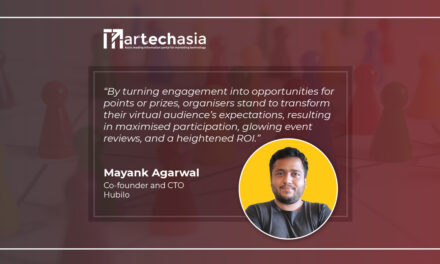Connected TV has emerged as the fastest growing screen for the video platform.
Southeast Asian viewing habits continue to shift, with TV screens being the fastest growing device for people to watch YouTube. Across all major countries across SEA, YouTube continues to see continued growth in users consuming content on connected TV screens – Thailand (12M), Malaysia (7.5M), Indonesia (25M) and the Philippines (16M) in 2022. This evolution has changed the way viewers define TV itself, with two-thirds of viewers in each market saying that YouTube “is TV” when it’s viewed on their television screen.
These statistics were shared at YouTube Singapore’s annual marketing showcase, Brandcast 2022.
In an opening address, Ben King, Managing Director of Google Singapore, spoke about the evolution of YouTube over the past 15 years in Asia Pacific and how the platform is characterised by depth of viewer connection, based on the rich and diverse content ecosystem that has been built over time. He added, “YouTube creators and their great content are defining YouTube as the place where it matters for communities, with people turning to the platform for inspiration, entertainment, learning and a range of other things. It has been an exciting journey to see how creators, marketers, and brands adapt and create content that meets the ever-changing viewing preferences of today’s audiences while leveraging the tools and benefits of YouTube for their businesses. We hope to continue partnering with brands in Singapore and the region to create deeper connections with their customers and achieve reliable returns for their businesses.”
Creators continue to create relevant content that remains well received in Southeast Asia
The total hours of content uploaded on YouTube by channels in Thailand, Vietnam, Indonesia, Malaysia has doubled year-on-year, as well as Singapore which saw a 40% growth. All countries also saw a double-digit increase in channel growth with over 100K and over 1M subscribers year-on-year. In Singapore, more than 600 local channels with over 100K subscribers, an increase of 30% from last year. According to a Ipsos survey, Gen Zs in Thailand, Philippines, Malaysia and Indonesia consider YouTube the #1 place to go to engage deeply with content that they love. The platform’s vast array of content proves that no matter the audience’s interest–whether mainstream or obscure–there is something on YouTube that will fit the bill.
YouTube has also evolved to be a single platform, multi-format, offering creators more ways to connect with their audiences. From short form on mobile and livestreaming on desktop to audio-first content and connected TV, YouTube’s multi-platform ecosystem allows creators to create, and audiences to consume how they want. This week, YouTube unveiled the availability of viewing Shorts on TV and game consoles, giving viewers a new way to enjoy their favorite short-form content from the comfort of their couch.
Its multi-format creativity gives creators every screen and every format possible to succeed. Globally, YouTube Shorts is now averaging 30 billion daily views, growing four times from a year ago. This is a shift in viewing behavior, as viewers are now moving back and forth between long-form and short-form content, all within YouTube. Podcasts are also fast-growing on the platform as seen through The Daily Ketchup Podcast from Singapore, seeing impressive growth over a one year period with 3M views and 31,000 subscribers. Its most popular episode reached a high of 147,000 views.
Consumers are turning to YouTube for purchase decisions
Alongside the continuous growth of e-commerce, YouTube has become a destination for viewers to discover brands and influence purchases. A Google and Talk Shoppe study shows that shoppers are turning to YouTube to discover and learn about the latest products. Over 90% of viewers from four Southeast Asian countries agree that YouTube creators give them the best information about products and brands, and for over 80% of viewers from these countries, YouTube helps them decide what to purchase.
According to the recent eConomy SEA 2022 report commissioned by Google, Temasek and Bain & Company, Southeast Asia’s digital economy is on course to hit $200B GMV this year. This continues to be driven by e-commerce, which is expected to hit 16% GMV growth despite the post-pandemic partial resumption of offline shopping and a greater focus on profitability by platform players.
From a business perspective, Ahmer Khan, Director of Marketing from Agoda, shared at the event how they were able to increase brand presence in Japan through YouTube. Through its campaign, they reached 33M unique users, and saw a brand awareness lift of more than 6% – well above the average category benchmark. Branded searches for Agoda also grew more than 3 times faster in Japan during the campaign than general searches for accommodation.
Local furniture store Castlery from Singapore, has also credited their growth in sales to YouTube as a platform that is reliant in reaching local and global audiences in an impactful manner. “YouTube has been impactful in building awareness for Castlery. As a digital-first homegrown furniture brand, we’re always looking for new ways to expand our reach and customer pool. We are pleased to be tapping on YouTube to connect with new and returning customers alike and to be able to do so through emotional storytelling to share about the brand and better engage with customers through digital means. In using YouTube Ads, we have been able to easily track and measure findings where we saw a 65% increase in searches on the brand, and such findings have also been beneficial in paving our marketing strategies moving forward.” said Leah Howatson, Vice-President of Marketing for Castlery.


















